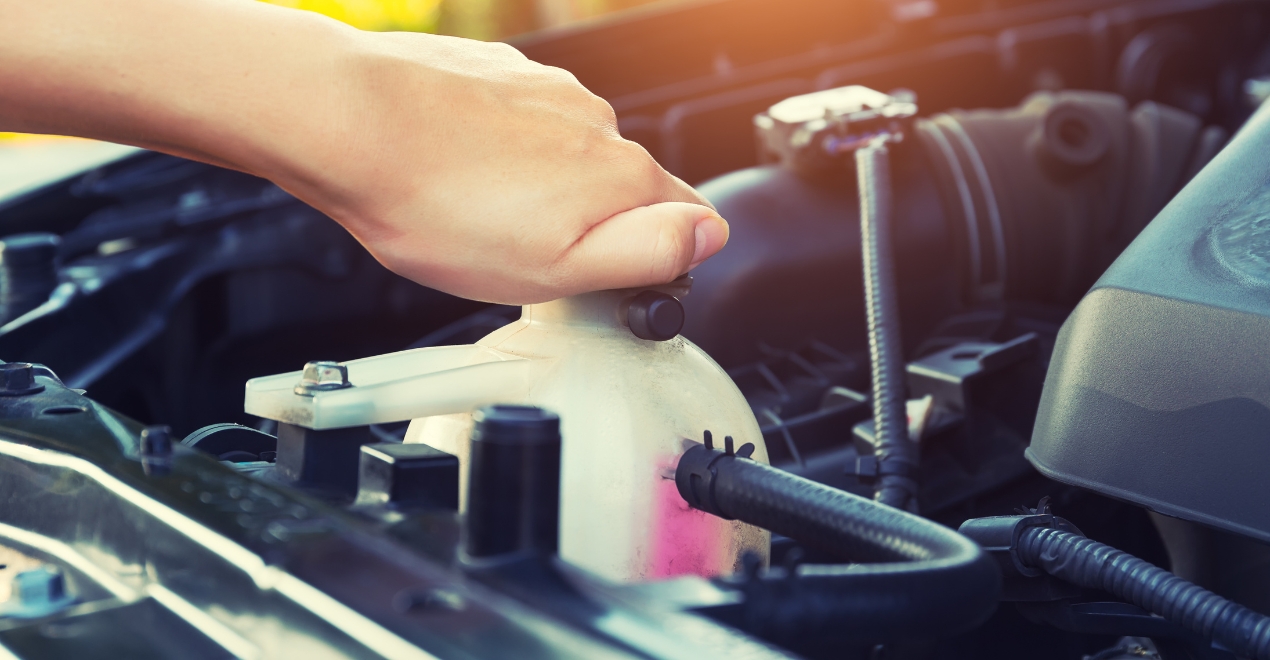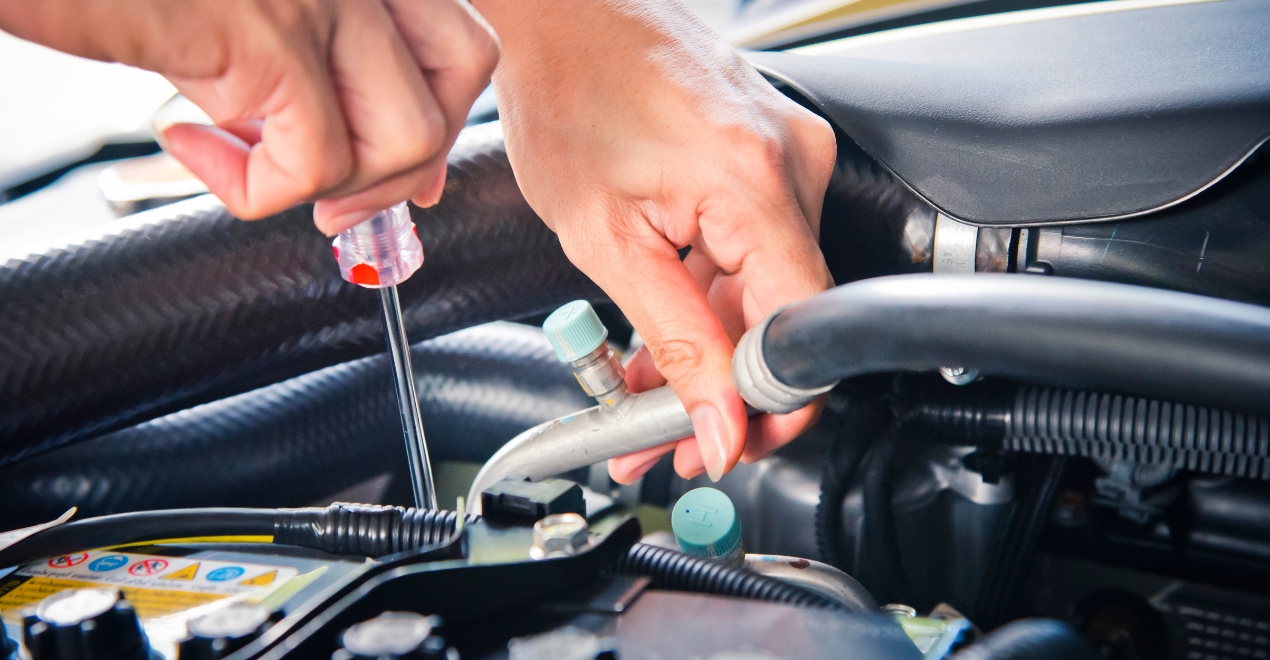Maintaining your car’s coolant levels is crucial for the health and performance of your vehicle. Coolant, also known as antifreeze, prevents your engine from overheating or freezing, ensuring it operates smoothly under various temperatures. This detailed guide will walk you through the steps to check and refill low coolant in your car, helping you keep your vehicle in optimal condition. Ready to ensure your car stays running smoothly? Don’t wait until it’s too late. Check and refill your coolant today, and remember, if you ever need instant car repair service, trust Crossroads Helpline to get you back on the road in no time.
Table of Contents
ToggleUnderstanding the Importance of Coolant

Coolant plays a vital role in your car’s engine system. It is a specially formulated liquid that not only prevents your engine from overheating but also protects it from freezing during cold weather. The coolant circulates through the engine, absorbing excess heat and dissipating it through the radiator. This process is essential to maintain the engine’s temperature within a safe operating range. Without sufficient coolant, your engine can overheat, leading to severe damage and expensive repairs.
Moreover, coolant contains additives that prevent corrosion and lubricate the moving parts within the cooling system. These properties help extend the life of your engine and related components. Therefore, regularly checking and refilling your car’s coolant is a fundamental aspect of vehicle maintenance.
Signs of Low Coolant Levels

Identifying low coolant levels early can save you from significant engine damage. Some common signs that indicate your car might have low coolant levels include:
- Overheating Engine: If your engine temperature gauge is consistently high or if you see a warning light on your dashboard, it could be due to low coolant.
- Coolant Warning Light: Modern cars are equipped with sensors that detect low coolant levels. If this light illuminates, it’s a clear indication that you need to check and refill low coolant.
- Visible Leaks: Puddles of green, orange, or pink fluid under your car can indicate a coolant leak.
- Sweet Smell: Coolant has a distinctive sweet smell. If you notice this around your car, it might be leaking coolant.
- Steam or Smoke: Steam or white smoke coming from under the hood is a sign that your engine is overheating, likely due to insufficient coolant.
How to Check and Refill Low Coolant
Before you begin, make sure your car is parked on a level surface and the engine is cool. Never check and refill low coolant reservoir when the engine is hot, as the pressurized coolant can cause severe burns.
Step-by-Step Instructions
- Locate the Coolant Reservoir: Open your car’s hood and find the coolant reservoir. It’s typically a translucent plastic tank with “coolant” or “antifreeze” labeled on it.
- Check the Coolant Level: Most reservoirs have “MIN” and “MAX” markings. Ensure the coolant level is between these marks. If it’s below the “MIN” line, you need to refill it.
- Inspect the Color and Condition: The coolant should be a bright, translucent color (usually green, orange, or pink). If it looks rusty, cloudy, or has particles floating in it, you might need to flush and replace the coolant.
How to Refill Your Car’s Coolant

Refilling your car’s coolant is a straightforward process, but it’s essential to follow these steps carefully to avoid damaging your vehicle.
Step-by-Step Instructions about Check and Refill Low Coolant
- Prepare the Coolant: Use the coolant type recommended by your car’s manufacturer. You can find this information in your owner’s manual. Some coolants need to be mixed with distilled water, while others come pre-mixed.
- Open the Coolant Reservoir: Unscrew the cap on the coolant reservoir. Be cautious and ensure the engine is cool to prevent burns.
- Pour the Coolant: Slowly pour the coolant into the reservoir until it reaches the “MAX” line. Avoid overfilling, as it can lead to pressure buildup and potential system damage.
- Close the Cap: Securely tighten the coolant reservoir cap.
- Run the Engine: Start your car and let it run for a few minutes. This allows the coolant to circulate and helps to remove any air pockets in the system.
- Recheck the Level: Turn off the engine, let it cool, and recheck the coolant level. Add more if necessary.
Preventive Measures and Tips
Maintaining your car’s cooling system requires more than just check and refill low coolant. Here are some tips to ensure your vehicle’s cooling system stays in top condition:
- Regular Inspections: check and refill low coolant, especially before long trips or extreme weather conditions.
- Coolant Flush: Follow your manufacturer’s recommendations for coolant flushes. Typically, it’s recommended every 30,000 to 50,000 miles.
- Monitor for Leaks: Keep an eye out for any signs of leaks and address them immediately. Coolant leaks can lead to significant engine damage if not promptly repaired.
- Use the Correct Coolant: Always use the coolant type specified by your car’s manufacturer. Mixing different types can lead to chemical reactions and damage your engine.
- Check Hoses and Belts: Inspect the coolant hoses and belts regularly for signs of wear or damage. Replace them as needed to prevent leaks and ensure efficient coolant circulation.
- Professional Help: If you’re unsure about any aspect of your car’s cooling system, seek professional assistance. Regular maintenance by a certified mechanic can help detect issues early and keep your vehicle running smoothly.
Common Mistakes to Avoid
When check and refill low coolant, avoid these common mistakes:
- Ignoring the Coolant Type: Using the wrong type of coolant can cause corrosion, deposits, and cooling system failures.
- Opening the Cap on a Hot Engine: Always let the engine cool before opening the coolant reservoir to avoid burns from hot, pressurized coolant.
- Neglecting Coolant Levels: Regularly monitor your coolant levels to prevent overheating and potential engine damage.
- Not Checking for Leaks: Ignoring small leaks can lead to bigger problems and costly repairs down the road.
- Overfilling the Reservoir: Overfilling can cause pressure buildup, leading to system failures and potential damage.
When to Seek Professional Help
While check and refill low coolant is a task many car owners can handle, there are times when professional help is necessary. If you notice any of the following issues, it’s best to consult a mechanic:
- Persistent Overheating: If your engine continues to overheat despite adequate coolant levels, there could be an underlying issue such as a faulty thermostat or water pump.
- Frequent Low Coolant: Constantly having to refill your coolant could indicate a leak or a more serious problem within the cooling system.
- Contaminated Coolant: If your coolant looks rusty, oily, or has debris, a professional flush and inspection might be needed to address potential internal engine issues.
- Strange Noises: Unusual noises from the engine or cooling system can signal problems that require expert diagnosis and repair.
Conclusion
Check and refill low coolant is essential for ensuring the longevity and performance of your vehicle. Regular checks, proper refilling, and addressing any issues promptly can prevent overheating and extensive engine damage. By following this guide, you can confidently manage your car’s coolant system and enjoy a smoother, safer driving experience. Remember, when in doubt, seeking professional help is always a wise decision to keep your vehicle in top shape. Empower yourself with the knowledge to maintain your vehicle’s health. Learn how to check and refill your coolant, and keep Crossroads Helpline in your contacts for swift and reliable car repair assistance when you need it most.

